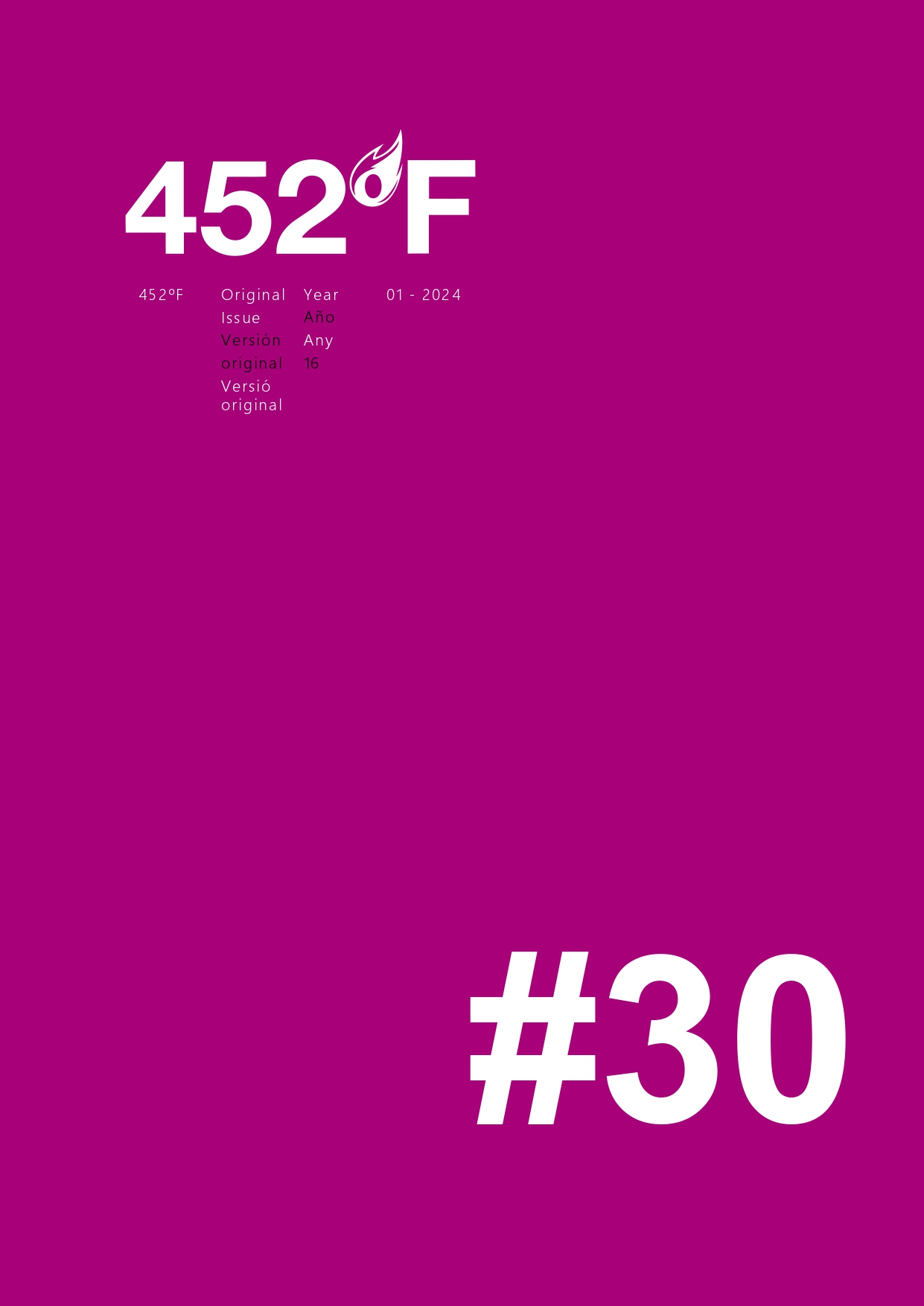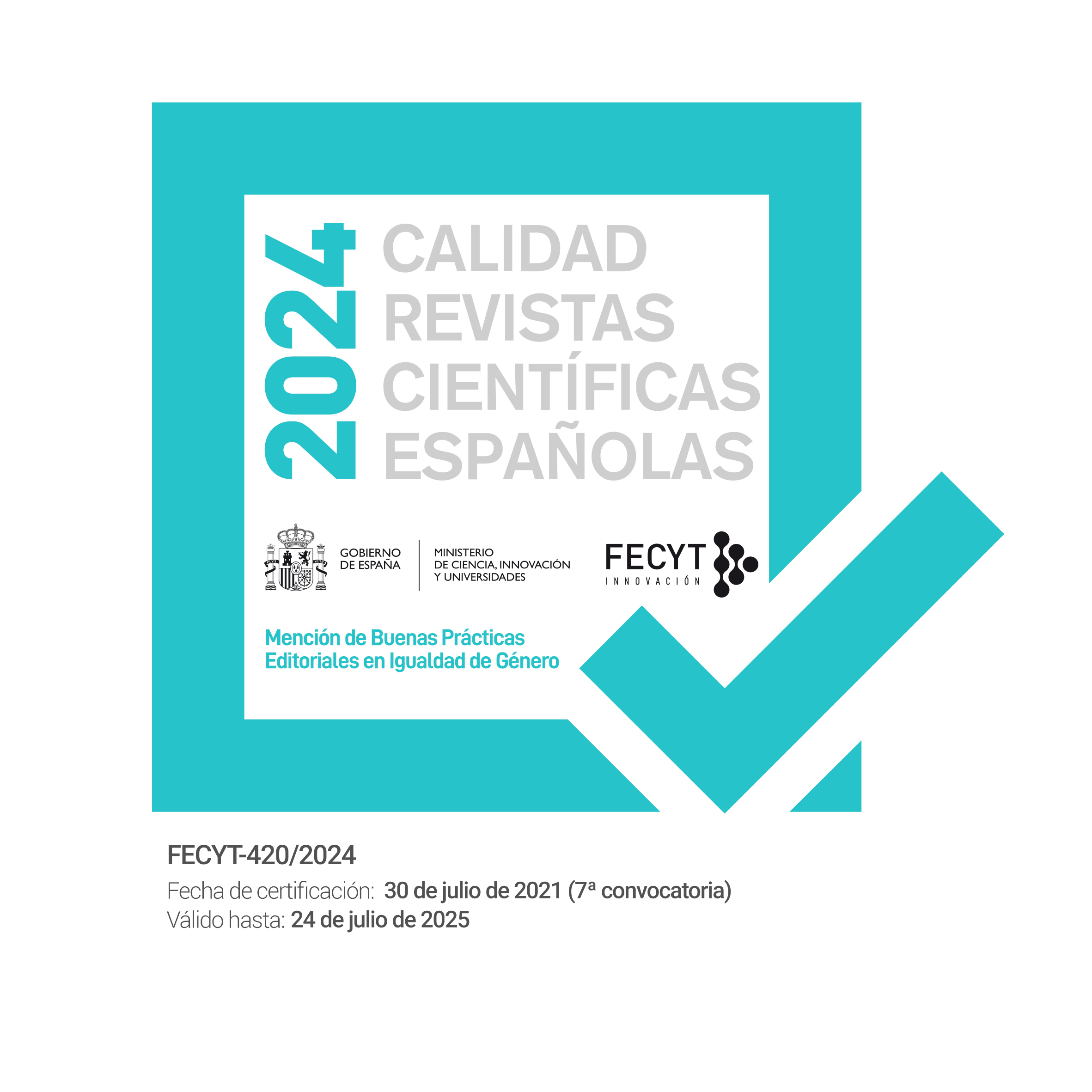The Fabric of Language: Tomás Saraceno and the Construction of an Arachnid, Haptic, Geological Universalism
DOI:
https://doi.org/10.1344/452f.2024.30.3Keywords:
Posthumanisms, Saraceno, Tomás, Latin-American Art, Anthropocene, Environmental Humanities, Art and SpidersAbstract
In La communauté terrestre, Achille Mbembe argues that we are living in a new era in which, for the first time in history, it will not be possible to establish political boundaries regarding the toxicity of the water we drink and the air we breathe. This shared destiny calls for the invention of a new terrestrial language. This essay takes up the artistic project of Tomás Saraceno and, focusing on his exhibitions involving spiders, examines the project that emerges from them: Arachnophilia, a multidisciplinary network of research on spiders. In these works, a new kind of universalism emerges that, far from conceptual abstraction, resorts to the material, the sensitive, the haptic, and the vibrational to name that which is common and interspecies. Thus, a new language emerges —a textile language, a geological language— and the aesthetic (sensitive) sphere becomes a philosophical-political site from which to conceive the terrestrial community.
Downloads
Published
How to Cite
Issue
Section
License
Copyright (c) 2024 Luz Horne

This work is licensed under a Creative Commons Attribution-NonCommercial-NoDerivatives 4.0 International License.
All contents published in the journal are protected under a Creative Commons BY-NC-ND license. This corresponds to legislation within Spain, and does not allow commercial use of the texts. It is not possible to modify the contents either.
General information.
Comparative Literature magazine 452ºF [ISSN 2013-3294] is a publishing project coordinated by Asociación Cultural 452ºF, and developed by its Editorial board.
Access to the Contents and Copyright.
All contents published in the journal are protected under a Creative Commons BY-NC-ND license. This corresponds to legislation within Spain, and does not allow commercial use of the texts. It is not possible to modify the contents either.
Every person has free access to the contents of the journal as long as they understand and assume that no profit is to be made on other people’s work.
In all cases, the original source name of the online journal and the article must be mentioned when used for any purposes.
Basic Conditions of all Call for Papers.
- 1. The author accepts that sending the paper:
- a. Does not guarantee the publication of it.
- b. Is done in accordance to the style-sheet of the magazine and the requirements of the specific call for papers.
- c. Implies the non-exclusive transferring of the first publication rights of the paper, as long as it is selected to be published in the journal, to theAsociación Cultural 452ºF, under a Creative Commons BY-NC-ND license.
- 2. The journal 452ºF, in due respect to moral rights of a copyright, guarantees that:
- a. All papers will be evaluated according to the procedure already mentioned.
- b. All authors will receive either a positive or negative answer to their sending a paper for publication.
- c. All papers will be published unabridged. The journal might make changes in the typographical disposition according to the needs.
- d. All papers will be published under a Creative Commons BY-NC-ND license.





